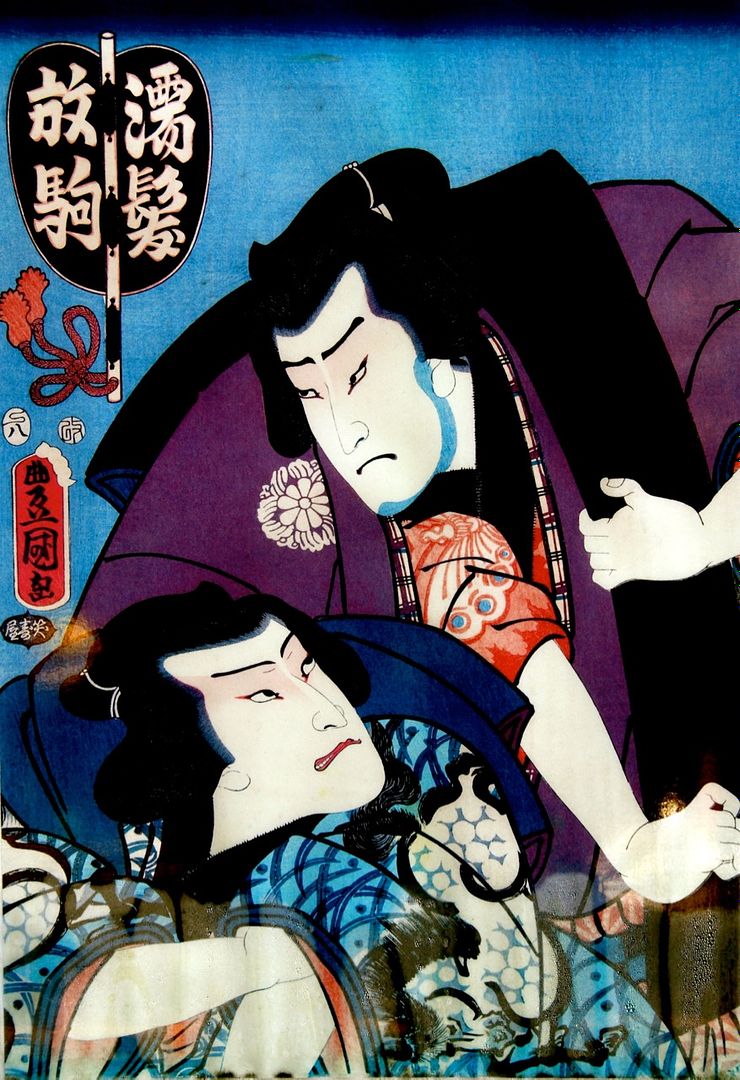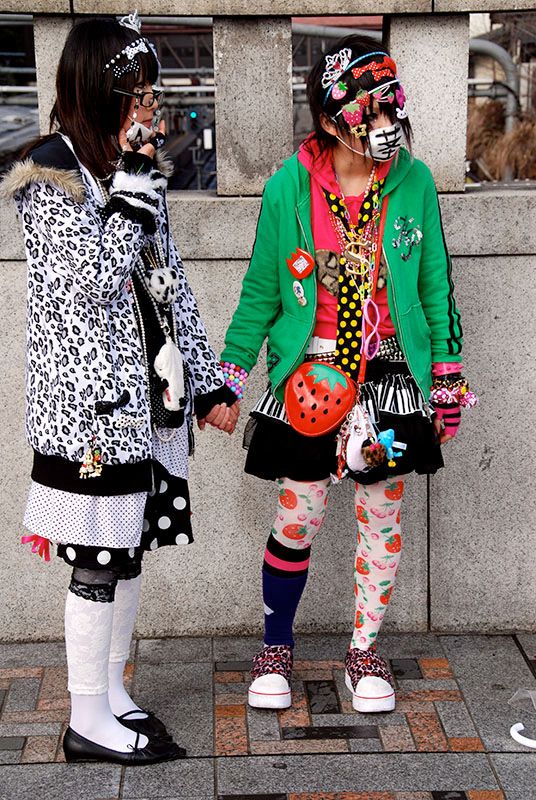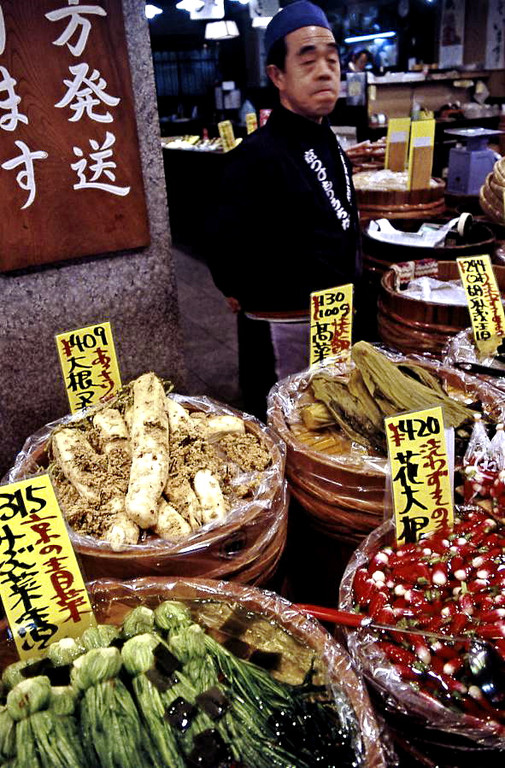March 1, 2011 |
Travel Feature
Quest for the Best of the Best in Tokyo.

Japan Photo by Steven Richter
I think of myself as fearless in pursuit of gourmand travel thrills. I conquered my dread of imagined mob scenes and street food in Calcutta. I braved the winding roads to a religious retreat in the mountains of Szechuan province for vegetarian esoterica. Showed up for lunch in lawless Macao as rival gangs took pot shots at each other. Risked being trod upon and possibly downed by local bacteria in the teeming markets of old Delhi to discover soulful breakfast snacks. But I just couldn’t get myself to the gastronomic Valhalla of Japan so spooked was I by tales of indifference to outsiders and stratospheric prices.
Then an architect pal who commutes regularly to commissions in Tokyo offered to be my guide to secret places where tourists rarely go. And Japanophilic friends in New York set up food world connections willing to lead me and my mate on delicious detours. I went off determined to discover the best of the best in Tokyo at every price level, high and low, from the exclusive and esoteric to the raffish and most humble.
At 10 p.m. barely three hours after landing at Narita the quest would begin. We tried to shock ourselves fully awake with a quick shower the better to experience the sushi satori promised at Okabe where a trio of sushi adepts are waiting at the unprepossessing eight seat counter. The mournful lovelorn plaints of Billie Holiday feel like a personal welcome as we sip icy cold Koshinozeki sake, premium fuel for the Edo-era masterworks of Kaichiro Okabe. Okabe, we are told, is the mentor of Masa Takayama whose $400 sushi omakase at the Time-Warner Center so startled and thrilled Manhattan sushi cognoscenti.
Hearing Masa’s name, the chef smiles and proceeds to sliver a long silver needle fish, painting thin slices with a red pepper and sesame sauce, fire to wake up our appetites. The fish’s liver follows in a puddle of soy. He grills a scallop in an envelope of nori. And then a parade of small bowls: Bits of raw shrimp that cling voluptuously to the tongue. Sticky ribbons of squid with chopped egg. Mackerel chunks topped with spikes of nori. Crab eggs laced with pungent seaweed. “It takes him three hours just to prepare that seaweed,” one companion translates the chef’s comment. Astonishing textures and surprising flavors explode in this prelude to sushi. Now slivers of fish arrive slicked with “the chef’s special sauce” -- that’s universal sushi chef talk meaning “I’m not giving away my secret.” Squid comes stuffed with chopped egg, Edo style. Vinegar tempers the sweetness of raw shrimp on warmed rice. The rice is perfect too, a measured amount, precisely the right temperature. A big hit of wasabi on fatty tuna goes right to my brain. I shiver as my senses go into overload at so much complexity delivered at a ceremonial pace one piece at a time. Well, yes, there is the sake I’ve sipped inbetween adding a filigree of heat and even recklessness to the moent. I’m thrilled to launch my quest on such a high.
***
Everyone I speak to next day as we check in with designated foodie guides and gurus has a sushi favorite, an exceptional robata grill or a temple of the kaiseki faith (little tasting portions in exquisite bowls and saucers). The Japanese are as obsessed with food as we Americans are. Possibly more so. I see them lined up to buy $60 a pound chocolates for Valentine’s Day in Takashimaya department store’s food hall when we stop by to explore a vast sweep of local and international edibles. The staff is well-drilled. Any clerk in on the floor can direct you (or even lead you) to Fauchon’s display or to the display of big urns of Japanese pickles by the gram. I never saw anyone actually buy a $100 melon but they are displayed as if they were Faberge eggs in ruffled tissue, the gift to bring the hostess you want to impress. We sample gyoza, pork dumplings hot off the griddle, savory and delicious.
I realize I can eat five or six times a day to cover every category of cooking just in Tokyo where Michelin has awarded 191 stars, more than Paris, more than any other city in the world. And specialization becomes maniacal with restaurants that just do eel or fugu (the fish that can kill if not properly de-toxed), temples of udon, others for soba, joints for ramen, tempura, breaded pork cutlets, chicken parts. Should we ignore the Japanese passion for Italian cooking and gooey layer cakes? Ignore Michelin’s darling, Joel Robuchon? Yes, I decide, I can go to Robuchon’s Atelier back home.
***
I’m more curious about tempura. Can even the best be thrilling enough to score in my quest? In my New York experience, tempura is rarely as exciting as a good fritto misto, never as transporting as sublime sushi. But a Japanese friend in New York has insisted on giving us a tempura evening at Kondo, a sacred institution of Tokyo and a favorite of hers. I can hope for a tempura revelation.
There are only 15 seats at the u-shaped pale wood counter (booked far ahead, I am told) in the simple, spare room atop one of those needle-like towers where restaurants are layered one on top of another. But we get a bow from Fumio Kondo himself planted in front of the frying station before a mountain of pebbled flour, arms folded like a middle-aged Ninja warrior. Neon signs moving outside the glass expanse of window work like modern art beyond his open kitchen.
Young women deliver drinks and amuses bouche from the kitchen. Then when everyone is into the prologue, Kondo tenses, swivels his head, like a baseball pitcher on the mound, and swings into action. Powder flies as he drags sea creatures through the hill of tempura coating or liquefies a batch into a batter. He sets a small tray in front of me, drops a rectangle of parchment on it and delivers a pair of crisped shrimp heads. Then a clean paper for the shrimp bodies, sweet and wondrously tender. He gives instructions to the two of us in English: “Use salt,” he will say. “Now, sauce.” “This time, lime.”

Harajuku Girls by Steven Richter
Then comes deep-fried lotus root, asparagus tips, a lily bulb. He constantly stops to wash away the floury mix that sticks to his fingers. For a mild little fish fried whole, he commands, “No sauce.” Scallop, clam, whiting, a giant mushroom cut into quarters, eggplant slivered and fanned. Fat-splotched parchments disappear. Clean ones arrive. Somehow Kondo keeps track of what we have eaten, what he has delivered to the VIP trio on my right, what he is sending across the room.
He selects an odd green acorn-like object from a basket of winter and early spring vegetables behind him – seasonal is the Japanese mantra. “Bitterbur,” he says, as If that would explain it. He presses the battered bulb flat as it fries so it emerges looking likes a giant brooch, its taste: the essence of green, with a surprise flash of bitterness at the end. Across the way more prudent or parsimonious souls may be having the $87 set dinner or even the expanded options at $123 but the chef is delivering all the a la carte extras to us: Sea eel. Abalone. Filets of fish we cannot identify. He does tricks like dragging a handful of favas through the batter and into the bubbling fat so they cling together like yet another great brooch.
At the end each diner gets kakiage -- an amorphous fried cake, tonight it’s full of scallop scraps and bits of leafy green. Rice is served separately along with a pot of tea, one strawberry and three small cuts of pineapple. This tame coda provides a chance to come back to earth from a transcendent experience of what tempura is all about. Now I understand the mystique of tempura.
***
Next evening our architect pal Richard Bloch leads us down a little alley past a gas station to Owan, partly hidden behind a dramatic facade of weathered steel. He promises to introduce me to excellence at a modest price. It’s clear Bloch loves this small oasis, not just for the gently priced omakase of delicious dishes --just $50 per person tonight --- but for his rapport with the amiable owner, Kuniatsu Kondo, a man who clearly reveres design too. The staff’s terra cotta aprons reflect the terra cotta-painted walls and the bowls set before us echo the forms of precious antique pottery and lacquer ware on illuminated shelves. the chef will choose a sake cup for you from a collection on a tray, each one different. A menu scroll is held open with two smooth black stones. An assistant behind the 12-seat counter carves ice for drinks into shapes Kondo requires. An artful chunk goes into my refreshing plum wine spritzer.
Kondo puts out special salts for a gossamer freshly made tofu opener followed by mizuma salad with bonito shaved on top at the last minute, Black sea weed the chef marinates himself comes on the sashimi plate, the fish excitingly smooth and firm, the temperature perfect. Bits of scallop, oyster and broccoli rabe stud a soft steamed dumpling afloat in a dashi broth. Pork slices over shitake with ginger follow. Shrimp sandwiched between lotus slices is rolled in batter and deep-fried for tempura. Pork comes again rolled in napa cabbage. With the fuss and care shown with the house’s layered egg, I sense the chef is moving toward a classic finale. “Each chef prides himself on his egg mixture,” Bloch observes. Unlike the blobby cut of omelet I avoid at home, this one is warm, softly layered, not sweet at all, with grated radish alongside. It’s too casual to be called kaiseki but the flair for design and the palette of tastes and textures, the simplicity and the surprise, elevate Owan to my collection of “bests.”
***
I’d not come this far to eat French. I hadn’t counted on the Japanese passion for foreign food. Or that a food-obsessed man-about town would invite us to lunch at Restaurant Kinoshita where the devotion of affluent sophisticates have made owner Kazuhiko Kinoshita a star chef. “But he’s one star chef who’s always in his kitchen,” our host observes. He hasn’t mentioned that the chef has made his name with French food. It’s too late to leave just because I had determined to focus my quest on Japanese tradition. It’s a long drive from the center of town, neither a hot residential area nor an important commercial outpost but the room is full of affluence, a Tokyo version of the ladies who lunch.
Though the 40 seats usually get booked far in advance, we have managed to snare three last-minute spots at the communal table, with its Thai orchids, sophisticated modern china and a good view of Kinoshita, athletic in short-sleeve white tee, apron tied over jeans, personally tweaking every plate in a few square feet of kitchen. His moustache and trendy chin whiskers set off the shiny hairless head.

Nishiki Market Kyoto by Steven Richter
After a trio of amuses, including a mini burger, a delicately jellied lobster cocktail in a martini glass – tenderest lobster, with apple and avocado in shimmering jelly -- makes me realize I’m grateful for a break after a week of soba, marinated fish, fried stuff on skewers and pickled tidbits. A lushly creamy seafood bisque positively smells like France. Not every dish in the expanded chef’s special six course tasting arrives in a poetic progression. I think he’s showing off, tossing in extras to honor our host, but I’m a fool for his blood sausage, the boudin noir with parsley in a small pastry crust with a square of apple, as well as the peppery calamari with squid liver in a stunning tomato sauce. A saddle of lamb is wrapped in bacon with a salad of micro greens alongside. Rare and tender venison filet served alongside a caul-wrapped venison patty with chestnut, ginko nut and something tasting like a potato but not quite is followed by tangerine segments on a shallow island of perfect crème brûlée plus stingingly tart pineapple sorbet and a white sesame flan. Pretty amazing from a chef who has never even been to France.
I’ve heard there are Tokyo restaurants so esoteric, so exclusive, so expensive that only royalty and moguls are welcome. But I feel I found what I was looking for…it’s true I had help but I always do. As an insatiable gourmand I never go anywhere for an assignment or a retreat without collecting addresses. For me the quest for the best never really ends.
Travel & Leisure March 2011